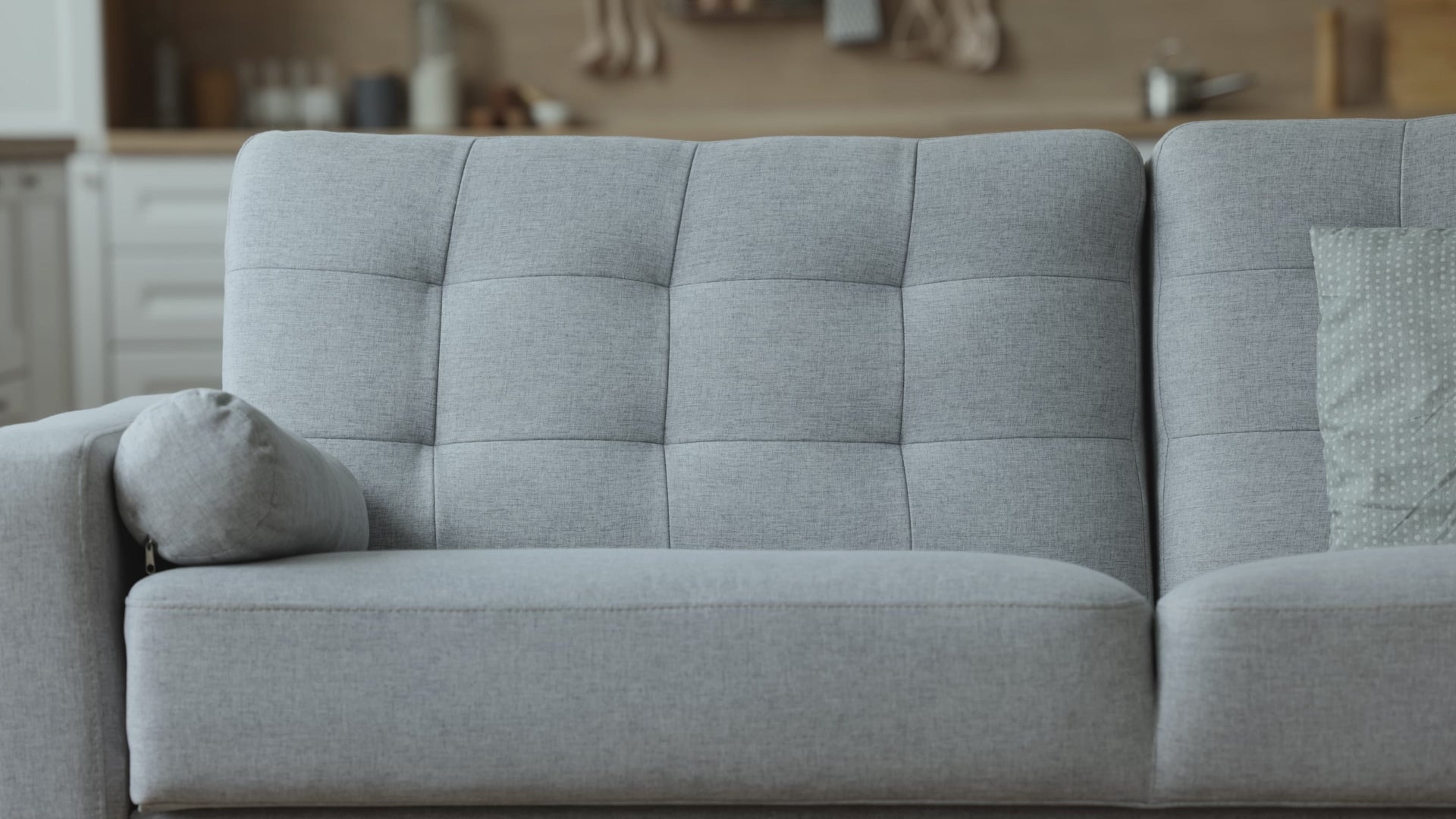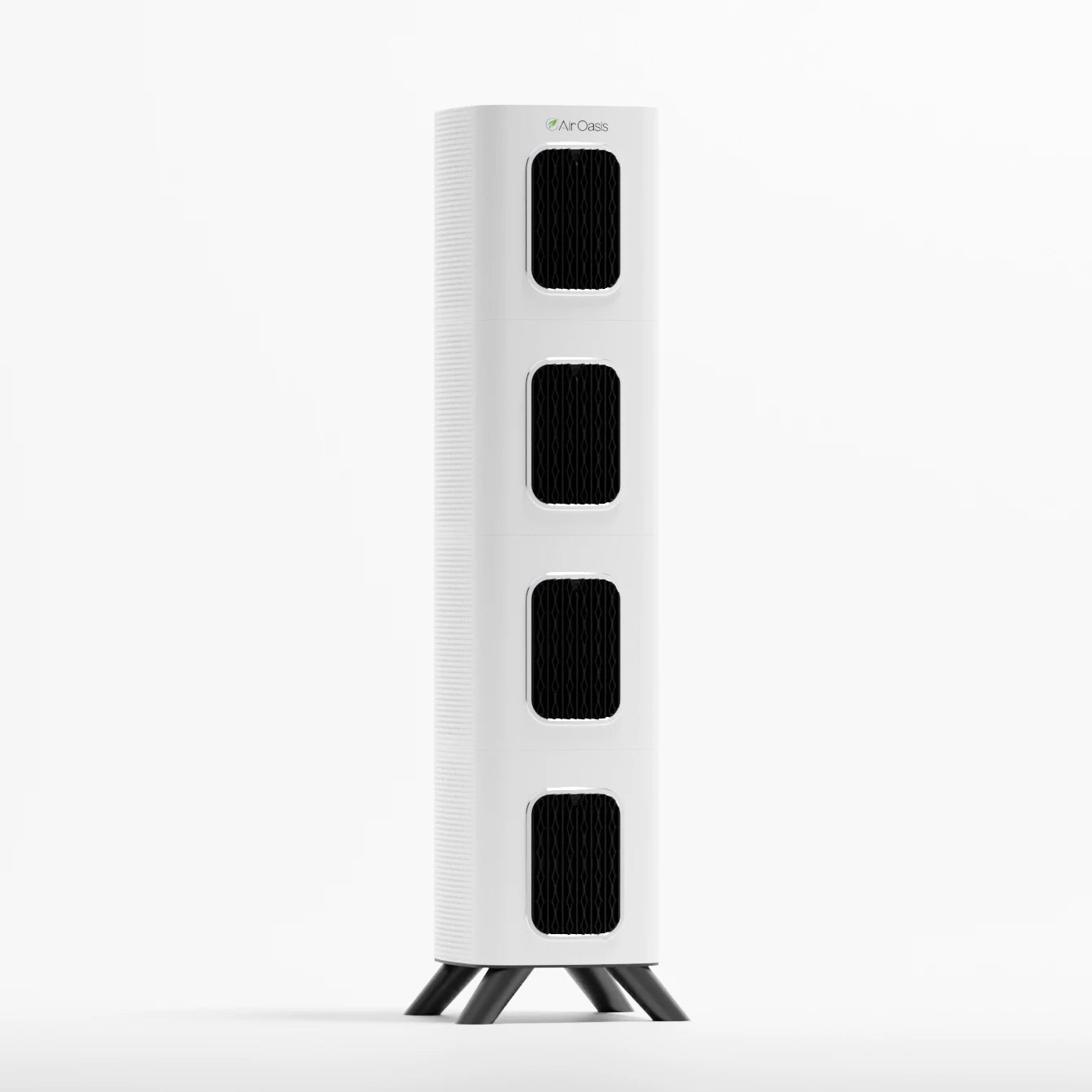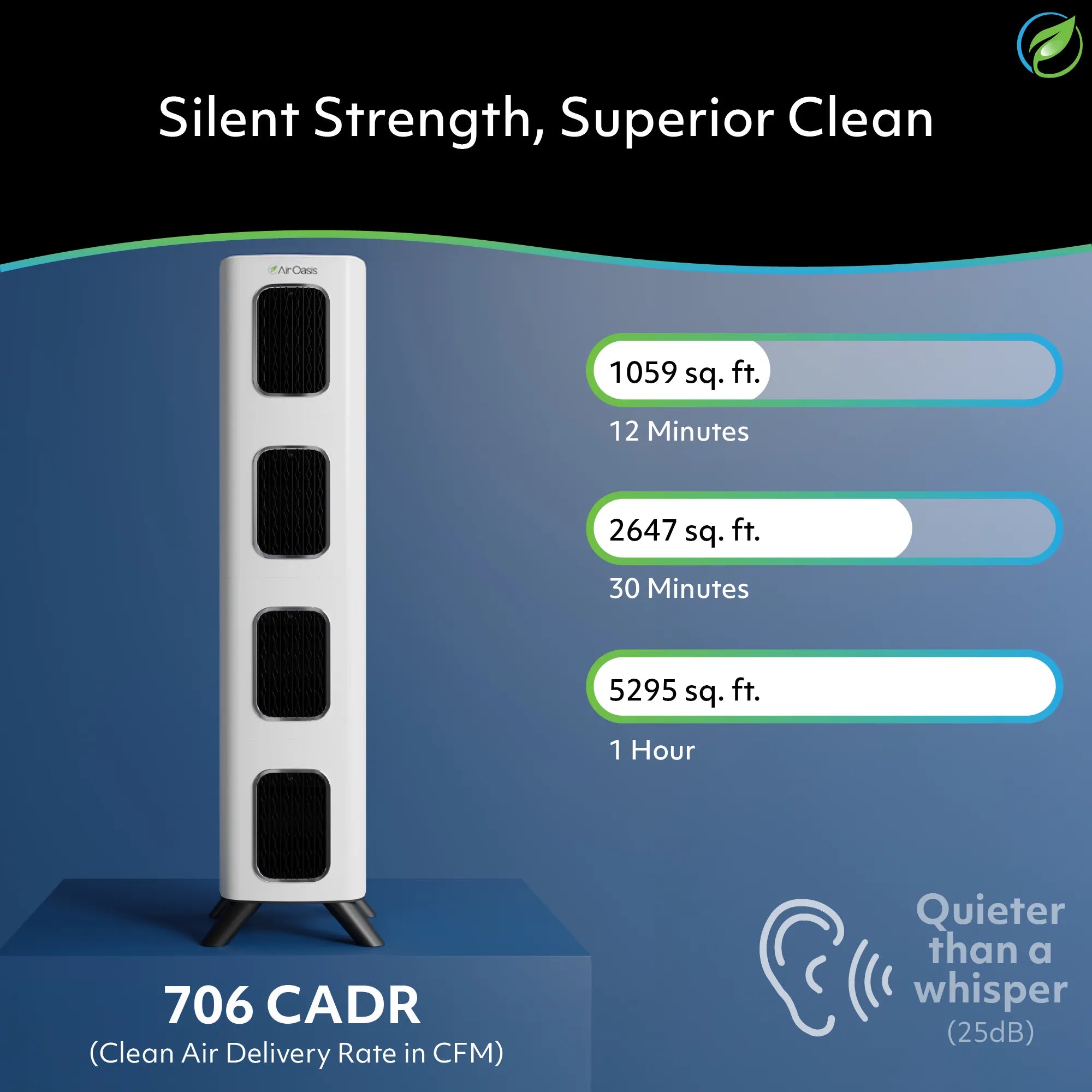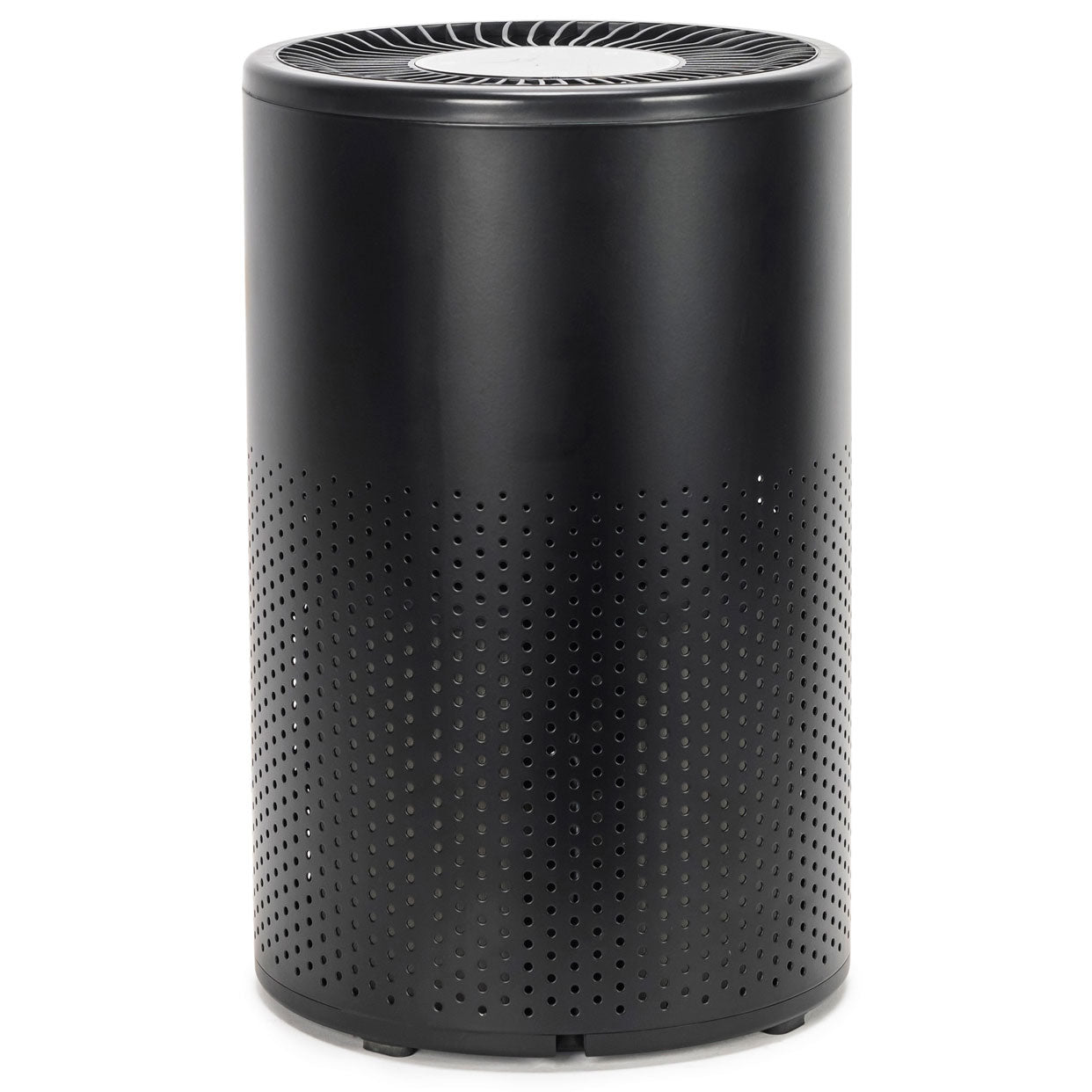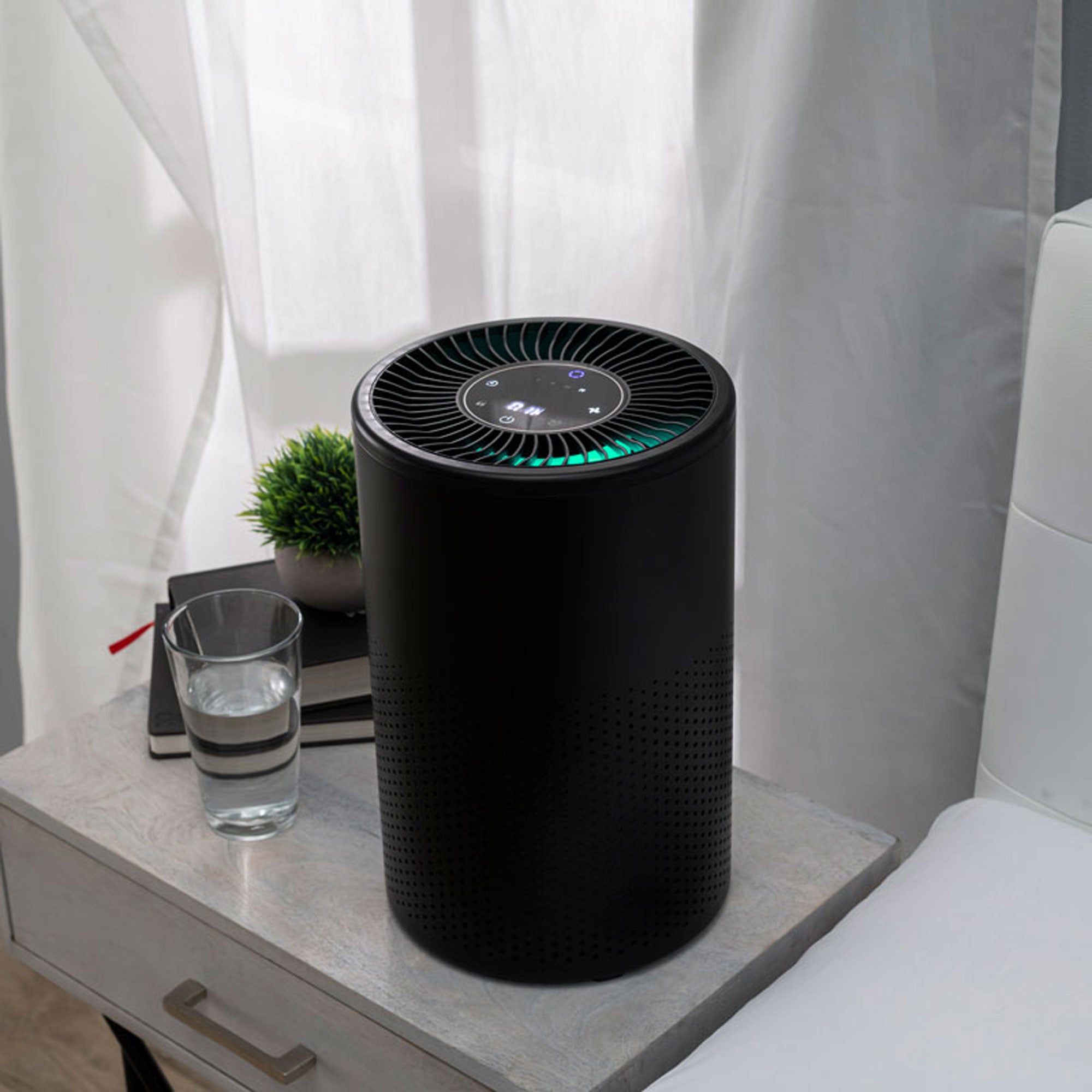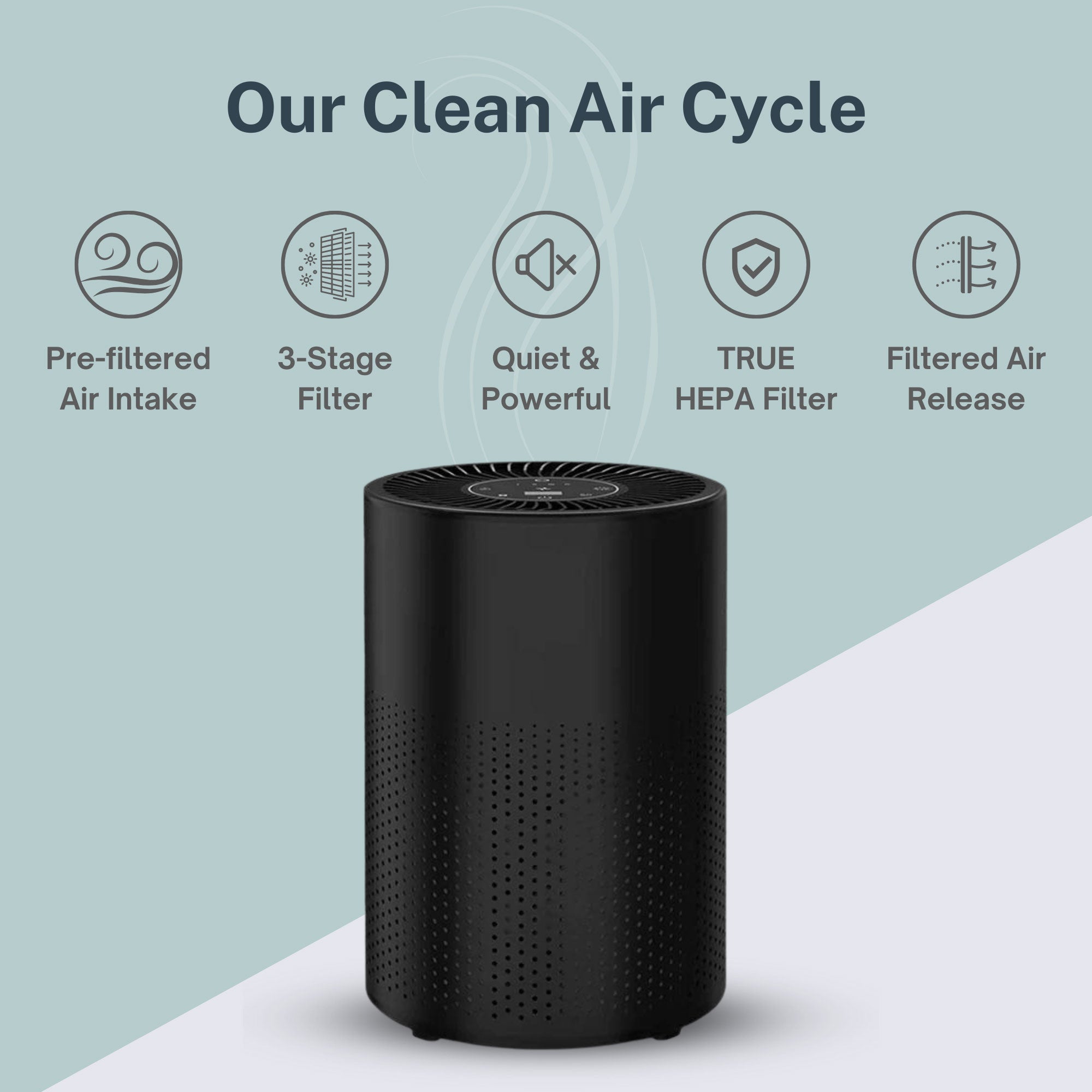Changing seasons, construction dust, new pets in the home – you name it. The type of allergens or pollutants you are experiencing determines the type of air purifier that best meets your needs.
While you typically won’t find an air purifier that uses only a carbon filter, activated carbon is a great addition to a multistage filtration system. Activated carbon can filter out gas, mitigate pollution, and remove odors. With this extra purification power, purchasing an air purifier with a carbon filter is a great way to improve indoor air quality.
How Does Carbon Work?
Activated carbon is commonly used to filter out harmful chemicals from contaminated air or water. Composed of black granules made up of coal, nutshells, wood, and other carbon-rich materials, the contaminated substance (water or air) flows through activated carbon. In this process, the contaminants stick to the surface of the granules, and as a result, they are removed from the water or air.
As early as the 1800s, activated carbon treatment was first used as a way to pump and treat groundwater systems. This process led to the widely accepted use of activated carbon as a treatment for poison, both medically and in the water and air. From there, researchers learned it could be used to treat contaminant vapors removed from contaminated groundwater and soil by soil vapor extraction and other cleanup methods. This was and is a chosen method because it is easy to transport and set up on a short timeline.
Carbon Filters in Air Purifiers
The foundation of a carbon air filter is the activated carbon layer on the surface of the filter. This extra layer of carbon adds an additional element to the filtration process, leaving you with cleaner air as a result.
Carbon filtration technology uses a process called adsorption. Through this process, pollutants in the air are treated and trapped inside the pore structure of a carbon media. The raw carbon material, which is filled with other organization matter, fills the carbon material with microscopic holes in the carbon filter media.
How Carbon Filters Work in Air Purifiers
As air passes through the carbon filter, the regular filter media captures dust, dirt, pet dander, and other particles. Since carbon has microscopic pores and a positive charge, it is able to bind with odors and gasses present in the air. When the air filters through the active carbon, particles are absorbed and no longer continue to circulate in the air. This process is known as adsorption.
Carbon filters rarely function alone. The best air purifiers for home or work typically employ multiple processes to clean the air. For instance, the widely regarded HEPA filter can filter out particles down to the 0.1-micron size. Despite their effectiveness, HEPA filters are unable to filter out gasses. Adding a carbon filter to a HEPA filtration system also allows the gasses to be filtered.
Carbon is used in medical treatments (anti-poison), gas masks, and water filters.
With a multiple filter system, air purifiers such as the Air Oasis iAdapt Air®, with carbon filter technology, can remove odors and volatile organic compounds (VOCs) from your indoor air.
The Power of Carbon Filtration on the Air
Size matters when determining the effectiveness of an air purification system. In general, solid airborne particles range in size from very small to very large. We evaluate filtration based on the size of these particles. We know that gas particles are always very small. HEPA filters, while powerful in their own right, cannot filter these tiny gas particles.
With diverse capabilities for reducing VOC levels and the smell of smoke, activated carbon filters have been a go-to method for filtering the air for many years. They can operate well at various temperatures and humidity levels, making them a good choice for purifying air when smoke is present.
A portable air purifier with a high CADR and an activated carbon filter can filter larger and smaller gas particles.
Activated Carbon to Reduce Odors
Odors are more than just an unpleasant presence in your home–often, they signal a more significant problem. Odors can be a sign of volatile organic compounds, including cigarette smoke, sealants, gasses, adhesives, and paint, to name a few.
To remove odors from the air, choose a portable air purifier with an activated carbon filter designed to remove gasses. If ignored and VOCs are inhaled daily over an extended period of time, they can be quite detrimental to your health.
Buy an Air Purifier With a Carbon Filter
Think of it like this: the strengths of one filter complement the strengths of the other, leaving you with a powerful filtration system that checks all the boxes. That’s how the Air Oasis multistage filtration system works. As a baseline, an air purifier pulls in air from the room, then uses fans to force it through the filter (usually a HEPA filter). To achieve maximal effectiveness and air purification, Air Oasis filters couple existing filtration systems like HEPA, with a carbon filter, to more effectively purify the air from VOCs, odors, gasses, and other miscellaneous particles in the air.
Air purification is one of the most powerful ways to passively improve your health. Experience the benefits of multistage filtration by shopping our wide range of carbon-equipped air filters to find the right fit for your needs.











